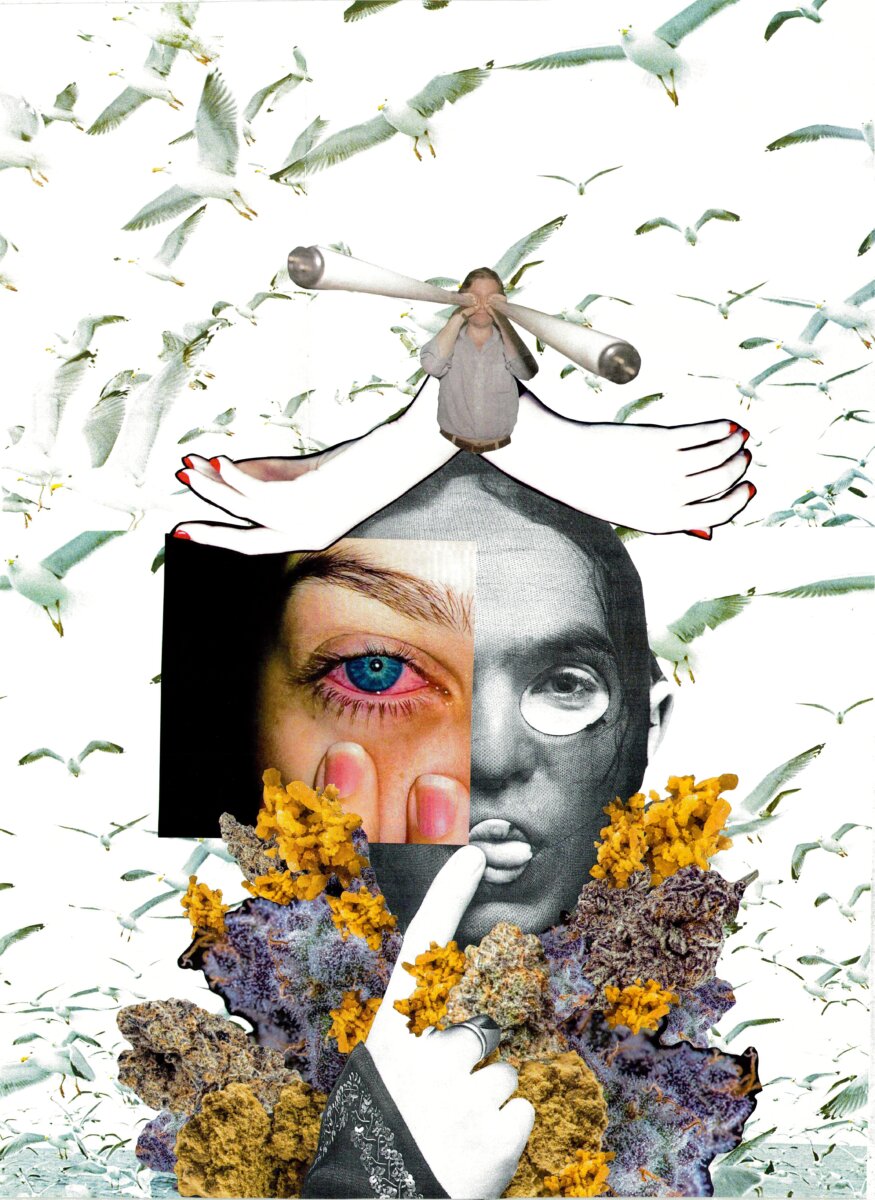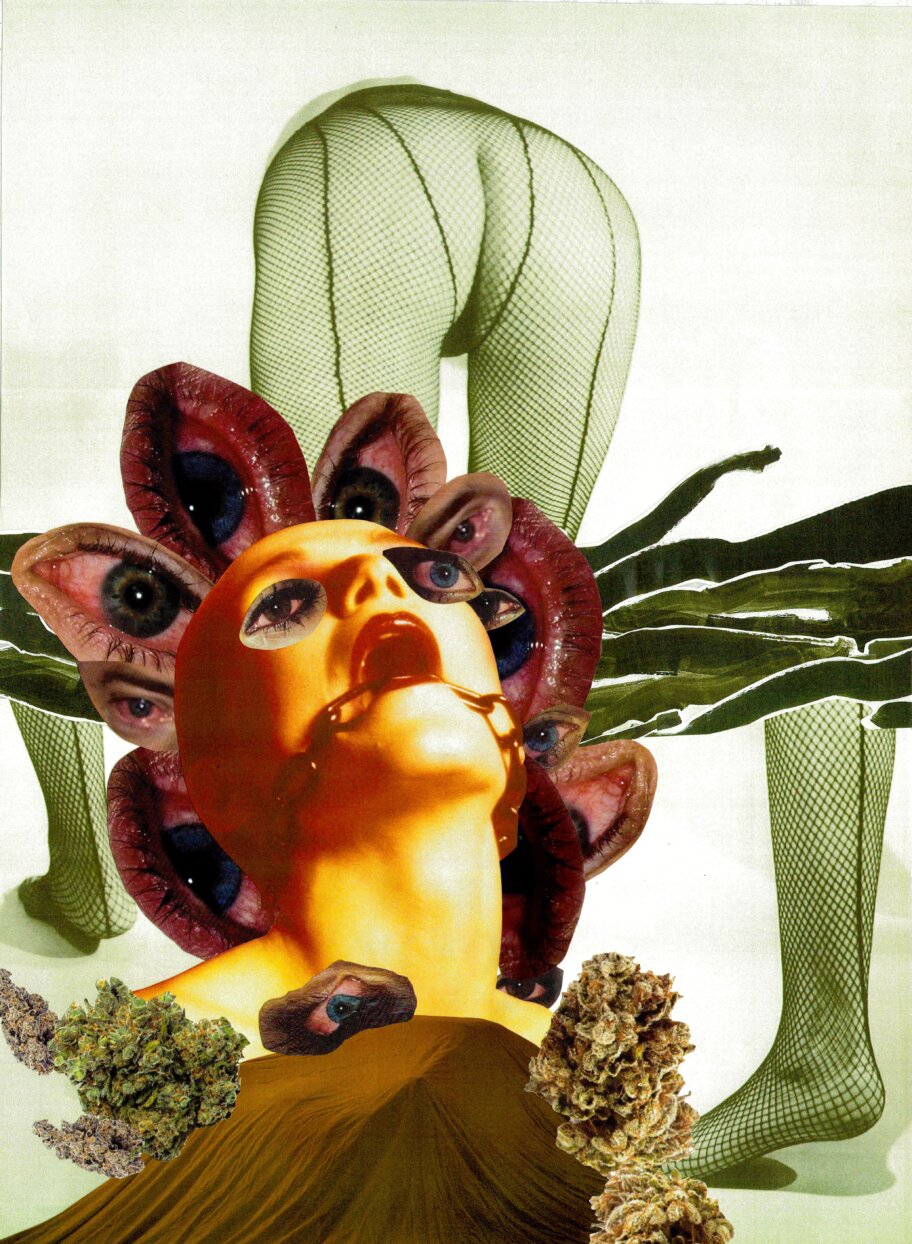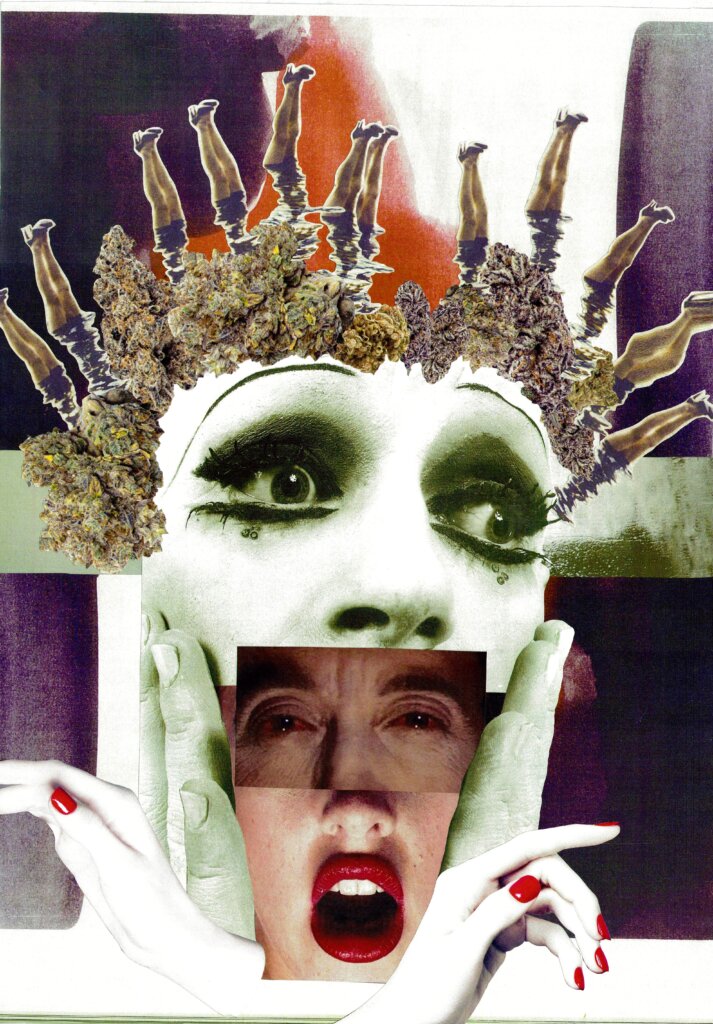
ARTWORK JESPER GUDBERGSEN @yessirjesper
TEXT BRIANA DODSON @bri_dodson
SPECIAL THANKS TO @insacannabis
Many don’t realize that the cannabis industry has never been that sustainable. The truth is, almost every part of the production process produces a massive amount of waste. Research from Colorado State University reveals that one serving of THC has a much higher greenhouse gas footprint than a serving of your favorite alcoholic beverages or cigarettes.
This is due to a few different factors used by many commercial growers today to bolster sales and increase crop yields. The use of harmful pesticides, packaging products, and extremely high energy costs, are all factors that occur most frequently with indoor growing.
As of 2020, 40% of legal cannabis growers cultivate solely indoors but indoor growing produces one of the largest environmental issues facing the industry today. It has a large energy footprint as a result of lighting, heating, ventilation, and HVAC systems, which are used for controlling climate and creating ideal growing conditions.
There are other concerns about indoor growing as well, including burdens on local water supply and water treatment infrastructure, and massive amounts of solid waste production, including lights that contain toxic mercury.
Although there are cannabis regulations in place, they’re left up to individual states, and a large number of illegal grow operations, the energy, pesticide, and water use of grow operations as a whole will likely remain hazy—until consumers and growers alike demand change.
As the industry continues to accelerate, the need for more sustainable practices is critical. Luckily, there are innovative companies and growers emerging that are dedicated to producing cannabis with the planet in mind by improving the entire industry as a whole – improving growing practices, implementing sustainable packaging, using less energy, and more.
We spoke with Lisa Black, Education & Training Coordinator at Insa, a dispensary in Massachusetts that offers premium cannabis in a variety of formats, about the brand’s initiatives towards a more “green” industry and if the term “sustainable weed” is actually a reality.

Hi Lisa! Can you share a little about Insa and your journey to becoming an Education & Training Coordinator?
I’ve been using cannabis medicinally now for close to 15 years. I have really bad chronic anxiety and that likes to manifest as chronic nausea. Cannabis is really good for that. When I saw that cannabis was really helping me (it was still illegal at that time), I did a deep dive into why it was illegal, how it was working on my body, etc. I grew up as a D.A.R.E. kid, always being told that cannabis is bad, so I wanted to educate myself and clear up my own stigmas that I had around it. I just became very passionate about cannabis as a medicine and also as an alternative thing to do recreationally, instead of alcohol or cigarettes.
When the legal market here in Massachusetts started to open up almost four years ago and when the position with Insa became available, I was like, “Wow, I’m really passionate about this.”
One of my catchphrases is education is the cure to stigma. I really do believe that with a little bit of education and patience, those who are anti-cannabis can come around and eventually become proponents and users of it themselves. Then I landed the role at Insa. Now I do a lot of training in-house and external training, like webinars.
We’re coming to realize (and experience for ourselves) the benefits of cannabis and CBD. How have you seen the industry grow over the last few years?
One of the things that I find really interesting is the innovation that is constantly happening in the cannabis industry. We know people who come in and have been utilizing cannabis for a long time, but they may just think it’s just joints and bowls and blunts, right?
We’ve come so far from that really basic way to enjoy cannabis to now there’s now fast acting edibles, tinctures, and even topicals. Seeing how there are so many different methods of use, and how you can combine these different methods of use to really tailor the experience that you’re trying to get—it’s one of the coolest things about how the cannabis industry is evolving.
With the cannabis industry booming, it does present a lot of questions around just how sustainable the industry is. In your opinion, does sustainable weed exist? Are we really there yet?
I really believe that humans are capable of immense amounts of innovation. The cannabis industry is still relatively young and new. As more people get involved in it, there’s going to be more innovation and people who are really hyper-focused on sustainability. Their growing techniques will eventually expand to everybody else who’s really interested in that. I do believe it’s possible there may be a little bit more emphasis on that from our regulators, too. I think we’ll get there.
It sounds like we might not be there yet. Is it possible for the industry to actually be sustainable? Is sustainable weed a myth?
It’s complicated because it’s one of the most highly regulated industries there is, especially in Massachusetts. We’ve got to make sure everything is above board. Honestly, for true sustainability, one of the better routes would be doing outdoor grows, but our regulations make it nearly impossible.
We kind of have to pick our battles, unfortunately, in that way. One thing we have been able to do is to switch over now to all LED lights, which are much more energy-efficient. We’re also not allowed to use pesticides here in Massachusetts, which is a bonus, but it’s also part of the reason why we can’t really do outdoor grows. We try to do what we can, where we can, but we still have to follow these sort of overarching regulations that are very strict.
You mention the use of pesticides. Can you touch more on that and how the entire process can be environmentally damaging?
There’s a right and wrong way to do just about everything. When it comes to making sure that the cannabis plant is healthy, you want to make sure that it’s getting everything that it needs. It is a heavy feeder, which means it does require a lot of fertilizer.
One thing that’s a big concern are the pesticides leaching back into the system, and into the environment. Fortunately in Massachusetts, we don’t really have that problem because we’re not allowed to use those.
I would say that the growing conditions are going to vary widely from state to state, but there is a way to do it where a lot of those less favorable things that come along with growing are mitigated. Keeping track of soil health and making sure that the good microbes are in the soil and staying alive is critical.
When people say, Oh, it’s just bad, there’s a little bit more to it than that. As long as you’re being really mindful about your growing practices, there is a more environmentally-friendly way to do it. Unfortunately, it’s not a priority for all growers.

Can you describe the growing process for those who may not be familiar?
With cultivation facilities, most of the time there’s a couple of different stages that the plant goes through. Almost all cultivation facilities will use a cloning and mother system, so we’re not sprouting seeds all the time because that could result in differences in genetics in the final product. We have a mother room where we keep a cannabis plant in the vegetative state for as long as we can. Then we take clones and cuttings off of that and develop those. Eventually, they’ll go into the vegetative room and then the flowering room and then we’ll harvest. The different stages of the cannabis plant require very different needs.
First is the vegetative stage, one of the longest stages, where the plant is really putting on the structure. This is where it’s growing most of the stems and the body. There’s no actual bud being grown. This usually requires around 18 hours of sunlight and like six hours of darkness. What’s neat about the cannabis plant is that if you change the lighting schedule, it is a signal to it to start flowering.
When our team sees that it’s ready, they transfer the vegetative plant into the flowering room and then change the lighting schedule—12 hours of light and 12 hours of darkness. We keep it there for eight to 12 weeks.
Once we see that the bud has developed to the right point, we harvest it. Next, we put it in the drying room to get rid of excess moisture. Not only is that going to make it more valuable for our customers because they’re not paying for water weight, but it will also help prevent things like mold and mildew. We have to be hyper-focused in Massachusetts because our testing is incredibly strict for any sort of microbial.
After we dry it out to the right stage, it gets put into the cure room. Curing is the process where we take that leftover moisture that’s inside of the plant and distribute it throughout the rest of the plant. The cure room takes that moisture and spreads it out throughout the entire bud, making it a much more pleasant smoking experience. Doing a proper cure is also going to bring out all those wonderful flavors and aromas that are in that plant. You can really lose a lot of the good stuff of cannabis from not doing the cure correctly.
How has Insa focused on sustainability overall?
We’ve definitely tried to perfect our methods and make things more “green” for lack of a better word. We used to use mylar plastic bags for all of our flower and we realized a lot of our customers don’t really like buying something that they then have to throw away. This is especially true when you’re buying an eighth every week—that’s 52 pieces of plastic that you’re throwing into the landfill.
A couple of years ago, we decided to change all of our flower packagings to be completely recyclable, by moving to aluminum tins. Not only does it actually keep the product fresher, now our customers have that chance to recycle these things and they don’t end up in a landfill, which is really amazing.
Are consumers demanding more sustainable practices?
We definitely have a lot of customers who are very conscious of the impact that they’re going to have by buying these products. For example, we have these little disposable vaporizers—which happen to be a mainstay because people do want that really quick and easy option—but we do emphasize to people who are buying these multiple times like maybe you should invest into a rechargeable battery so that you’re not throwing these things away when they’re done.
There’s a lot of talk about sustainable weed right now—and marketers can work magic to say whatever they want. What should consumers be on the lookout for to avoid greenwashing?
Yeah, you know, that’s really a good question—you’re going to have to do some research into companies you’re looking to purchase from. There are a lot of different manufacturers and producers, and they all have different goals. Some of them, like Insa, are always looking at the more sustainable future and trying to attain that, whereas others may just be in it for the bottom line.
Do your research into your companies, look at their mission statements, look at their core values, and look at their education pieces on their website. Education is so important. If they’re not willing to educate their consumer, then that might be a red flag that they might be in it for not the best reasons.
The bottom line: Growing practices in the cannabis industry can take a massive toll on the environment. Due to the fact that cannabis regulations are left up to individual states, not all cannabis is created equal. Consumer demand for cleaner, more environmentally-friendly processes is critical.
| Cookie | Duration | Description |
|---|---|---|
| cookielawinfo-checkbox-analytics | 11 months | This cookie is set by GDPR Cookie Consent plugin. The cookie is used to store the user consent for the cookies in the category "Analytics". |
| cookielawinfo-checkbox-functional | 11 months | The cookie is set by GDPR cookie consent to record the user consent for the cookies in the category "Functional". |
| cookielawinfo-checkbox-necessary | 11 months | This cookie is set by GDPR Cookie Consent plugin. The cookies is used to store the user consent for the cookies in the category "Necessary". |
| cookielawinfo-checkbox-others | 11 months | This cookie is set by GDPR Cookie Consent plugin. The cookie is used to store the user consent for the cookies in the category "Other. |
| cookielawinfo-checkbox-performance | 11 months | This cookie is set by GDPR Cookie Consent plugin. The cookie is used to store the user consent for the cookies in the category "Performance". |
| viewed_cookie_policy | 11 months | The cookie is set by the GDPR Cookie Consent plugin and is used to store whether or not user has consented to the use of cookies. It does not store any personal data. |